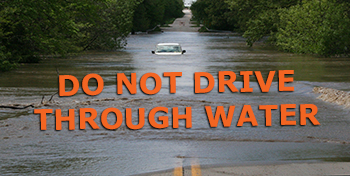The Importance of Flood Barriers and Protection
Floods are natural disasters that can cause immense damage to properties, infrastructure, and lives. In order to mitigate the impact of floods, it is crucial to implement effective flood barriers and protection measures.
Types of Flood Barriers
There are various types of flood barriers that can be used to protect against flooding:
- Levees: Earthen embankments built along riverbanks or coastlines to prevent flooding.
- Floodwalls: Vertical structures made of concrete or steel that block floodwaters from entering a specific area.
- Sandbags: Temporary barriers filled with sand that can be quickly deployed in emergency situations.
- Floodgates: Mechanisms that can be closed to block off openings and prevent water from entering a designated area.
Benefits of Flood Protection
Implementing flood barriers and protection measures offers several benefits:
- Risk Reduction: By creating physical barriers against floodwaters, the risk of damage to properties and infrastructure is significantly reduced.
- Safety Enhancement: Protecting communities from floods ensures the safety and well-being of residents during extreme weather events.
- Economic Savings: Preventing flood damage through effective protection measures can lead to cost savings in terms of repair and recovery efforts.
Community Resilience
Incorporating flood barriers and protection into community planning helps enhance resilience against natural disasters. By investing in robust infrastructure and proactive measures, communities can better withstand the impact of floods and recover more quickly in the aftermath.
In Conclusion
Flood barriers and protection play a vital role in safeguarding lives, properties, and infrastructure from the devastating effects of floods. By prioritizing flood resilience through effective planning and implementation of protective measures, communities can build a safer and more secure environment for all residents.
Benefits of Flood Barriers: Safeguarding Communities and Promoting Resilience
- Effective in reducing flood damage to properties and infrastructure.
- Enhances safety for residents by minimizing the risk of flooding.
- Provides cost savings by preventing costly repairs and recovery efforts.
- Helps communities become more resilient to natural disasters like floods.
- Offers peace of mind knowing that there is a defense against floodwaters.
- Contributes to sustainable development by protecting the environment from flood-related destruction.
Challenges of Flood Barriers: Costs, Environmental Impact, and Limitations
- Costly to design, construct, and maintain
- May alter natural ecosystems and habitats
- Can create a false sense of security leading to lack of preparedness
- Potential for failure during extreme flood events
- Limited effectiveness against flash floods or unexpected surges
- Barriers may impede water flow and exacerbate flooding in adjacent areas
Effective in reducing flood damage to properties and infrastructure.
One significant benefit of implementing flood barriers and protection measures is their effectiveness in reducing flood damage to properties and infrastructure. By creating physical barriers that can block or divert floodwaters, these protective measures help minimize the impact of flooding on buildings, roads, utilities, and other critical infrastructure. This not only saves property owners from costly repairs and losses but also ensures the continuity of essential services during and after a flood event. The ability of flood barriers to mitigate damage to structures underscores their importance in enhancing community resilience and safeguarding livelihoods against the destructive forces of nature.
Enhances safety for residents by minimizing the risk of flooding.
One significant advantage of flood barriers and protection is that they enhance safety for residents by minimizing the risk of flooding. By implementing effective flood protection measures such as levees, floodwalls, and floodgates, communities can reduce the likelihood of floodwaters reaching residential areas, thereby safeguarding lives and properties. This proactive approach not only mitigates the potential damage caused by floods but also provides residents with a sense of security and peace of mind knowing that their homes are better protected against natural disasters.
Provides cost savings by preventing costly repairs and recovery efforts.
Implementing flood barriers and protection measures provides significant cost savings by preventing costly repairs and recovery efforts in the aftermath of floods. By investing in effective flood protection, communities can avoid the financial burden associated with repairing damaged infrastructure, homes, and public facilities. Proactive flood prevention not only saves money but also minimizes the economic impact of floods on local businesses and residents, ensuring a more sustainable and resilient community in the face of natural disasters.
Helps communities become more resilient to natural disasters like floods.
Implementing flood barriers and protection measures not only safeguards communities from the destructive impact of floods but also enhances their overall resilience to natural disasters. By investing in flood protection infrastructure and proactive strategies, communities can fortify their defenses against flooding events, minimize damage, and expedite recovery efforts. This resilience-building approach ensures that communities are better equipped to withstand the challenges posed by floods and other environmental hazards, ultimately fostering a safer and more sustainable environment for residents to thrive in.
Offers peace of mind knowing that there is a defense against floodwaters.
The implementation of flood barriers and protection offers peace of mind to individuals and communities by providing a defense against the destructive forces of floodwaters. Knowing that there are effective measures in place to mitigate the impact of flooding can alleviate anxiety and uncertainty during times of heightened flood risk. This sense of security allows residents to feel more prepared and confident in their ability to protect themselves and their properties, fostering a greater sense of safety and assurance in the face of potential natural disasters.
Contributes to sustainable development by protecting the environment from flood-related destruction.
Flood barriers and protection contribute to sustainable development by safeguarding the environment from flood-related destruction. By implementing effective flood protection measures, such as levees, floodwalls, and other barriers, we can minimize the environmental impact of floods on ecosystems, wildlife habitats, and natural landscapes. Protecting the environment from flood damage not only preserves biodiversity and ecological balance but also promotes long-term sustainability for future generations to thrive in a resilient and harmonious environment.
Costly to design, construct, and maintain
One significant drawback of flood barriers and protection measures is the substantial cost associated with their design, construction, and maintenance. Building effective flood barriers requires specialized engineering expertise, high-quality materials, and ongoing upkeep to ensure their functionality and reliability. The financial burden of implementing and sustaining these structures can be a challenge for communities, especially those with limited resources. Balancing the need for flood protection with the costs involved poses a dilemma that requires careful consideration and strategic planning to achieve long-term sustainability.
May alter natural ecosystems and habitats
One significant drawback of flood barriers and protection measures is that they have the potential to alter natural ecosystems and habitats. By constructing levees, floodwalls, or other barriers, the flow of water may be redirected or blocked, leading to changes in the surrounding environment. These alterations can disrupt the natural balance of ecosystems, affecting wildlife habitats, water quality, and biodiversity. It is essential to carefully consider the environmental impact of flood protection projects and implement mitigation strategies to minimize harm to natural ecosystems while still effectively managing flood risks.
Can create a false sense of security leading to lack of preparedness
One significant con of flood barriers and protection measures is that they can create a false sense of security among individuals and communities, potentially leading to a lack of preparedness for future flood events. When people rely solely on physical barriers to protect them from flooding, they may underestimate the need for comprehensive emergency plans, evacuation strategies, and readiness for extreme weather conditions. This overreliance on flood barriers without adequate preparedness measures in place can leave communities vulnerable and ill-equipped to respond effectively to unforeseen challenges during floods. It is essential to strike a balance between utilizing flood protection structures and maintaining a proactive approach to disaster preparedness to ensure comprehensive resilience against flooding.
Potential for failure during extreme flood events
One significant drawback of flood barriers and protection systems is their potential for failure during extreme flood events. Despite their intended purpose of mitigating flood damage, these structures can be overwhelmed by the sheer force and volume of water during exceptionally severe storms or flooding incidents. In such cases, the failure of flood barriers can result in catastrophic consequences, leading to widespread inundation and risking the safety of communities that rely on these protective measures. It is crucial for authorities and planners to consider this con when designing and implementing flood protection strategies to ensure their effectiveness under the most extreme conditions.
Limited effectiveness against flash floods or unexpected surges
One significant drawback of flood barriers and protection measures is their limited effectiveness against flash floods or unexpected surges. These sudden and intense flood events can overwhelm existing barriers, leading to breaches and inundation of areas that were thought to be protected. The rapid onset and high volume of water associated with flash floods pose a challenge for traditional flood protection systems, highlighting the need for more adaptive and resilient strategies to address these unpredictable scenarios.
Barriers may impede water flow and exacerbate flooding in adjacent areas
One significant drawback of flood barriers and protection measures is that they have the potential to impede the natural flow of water, which can worsen flooding in neighboring areas. When flood barriers restrict the movement of water, it can lead to increased water levels and pressure in adjacent regions, causing flooding in areas that may not have been as severely affected otherwise. This unintended consequence highlights the importance of carefully planning and designing flood protection systems to minimize negative impacts on surrounding areas while still effectively safeguarding against flooding risks.




